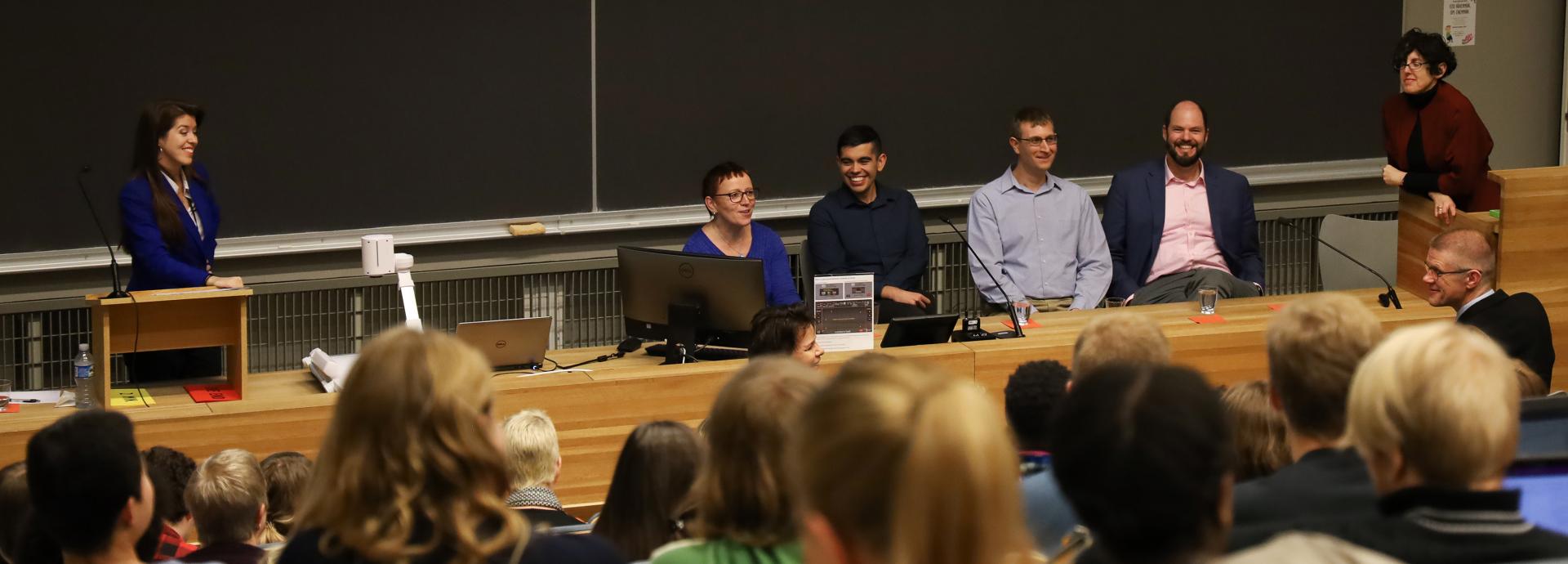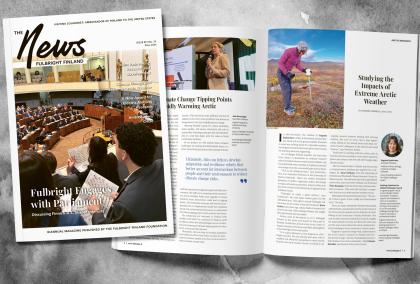

Who attends?
The audience is mostly university-level students and faculty from the Turku area with an interest in topics related to American studies. Their English ability is usually good, although using a lot of colloquial English may cause some challenges.
You will also meet the newly selected 2025-26 Finnish Graduate Grantees. We would very much appreciate it if you would talk to the new Finnish graduate grantees during the seminar breaks and meals, and share your advice on selecting suitable universities and tips for their upcoming Fulbright term in the U.S.
What happens?
Your task: You should create groups/panels of 3 grantees who are interested in presenting on a similar topic (e.g., food in the South, favorite hobbies, American sports, sustainability in the U.S., etc.). The length of the presentation depends on the size of the group, but it has usually been approximately 30-60 minutes, including time for discussion.
Feel free to contact Dr. Janne Korkka if you want to discuss your choice of topic. Janne's email is available in his invitation letter.
Presenter information
Researchers at the University of Turku and John Morton Center will serve as facilitators and session chairs during the seminar. Once the program is finalized, they will contact each group to discuss their panel and presentation, the flow and order of the speakers, and other important details.
What kind of topic?
Anything “American” that you want to talk about! It does not need to be related to your Fulbright study or research project, although it can be. You should select a topic you know about, feel comfortable presenting on to a large group, and can have fun with.
The aim is to share unique aspects of the U.S. culture/society with Finnish students. Some previous topics include: Barbies, fiddling styles in the U.S. (with a demonstration), the Philly cheese steak, New England, popping dance (with a demonstration), hiking the Appalachian trail, March Madness, Hurricane Katrina and the aftermath, early Spanish explorers to Florida… and many more!
Please note that the event is not intended as a forum for reading a scholarly paper. The topics should be of interest to a wide audience: please also bear in mind that the listeners will not be specialists, but mostly BA and MA students.
Important technical considerations for your presentation
- You will be required to send your presentation beforehand, so get started early!
- Make your presentation PC/Windows compatible (this is particularly important if you use a Mac!). You will not be able to use your own computer.
- Avoid using special fonts, programs, or other tools that are not readily available on a lecture room PC - installing them will not be possible.
- Lecture rooms typically have reliable internet connections, but if you are using web resources in your presentation, have a plan B prepared just in case.
- If you want to use the Fulbright Finland logo in your presentation, you can download it here (png). (right click the photo, choose Save as... and save the file as .png. The background should be transparent. If you have dark or multicolored background, please use the white version of the logo.)
Tips for first-timers, and others…
- Remember that there are mainly non-native English speakers in the audience, so speak slowly and use e.g. Finnish units of measure etc.
- Combine some text and photo graphics or demonstration to make a lively presentation. Limit the amount of text shown on each PowerPoint slide; a dense text is boring and difficult for the audience to read.
- Beware the number of slides you show (when in front of an audience it often takes more time than you anticipate to describe or explain each slide).
- Beware of having a lack of variety from slide to slide, each slide should tell its own story and have some energy.
- Rehearse your presentation several times (you will find that time goes very quickly!), and then rehearse it again out loud so that you can time your comments with your slides or demonstration.
Questions?



